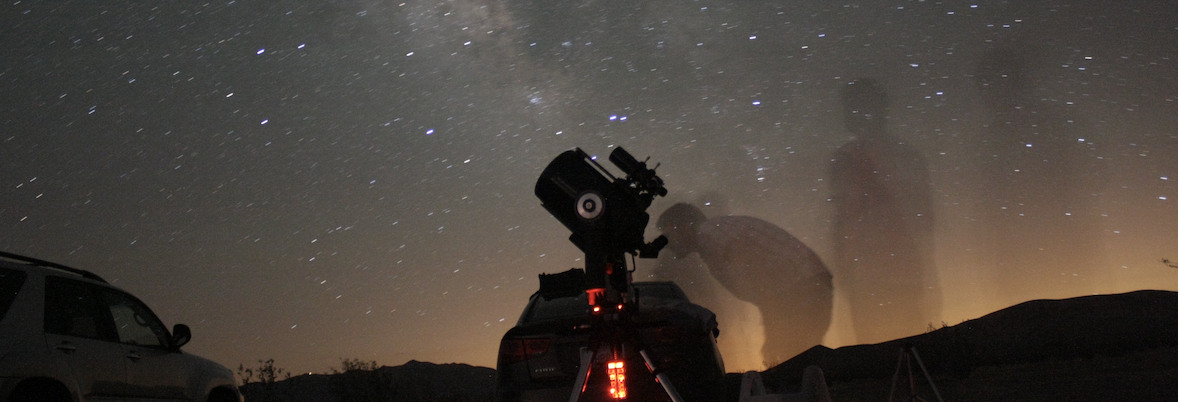Episodes

Monday Oct 03, 2022
October 2022
Monday Oct 03, 2022
Monday Oct 03, 2022
WATCH this on YouTube
LISTEN as a podcast on Podbean, Stitcher, or iTunes
Social Media: @mrwebbpv on Twitter and Instagram
@pvplanetarium on Facebook, Twitter, and Instagram
Halloween month brings us some spooooooooky astronomy. Saturn and Jupiter soar ominously above, Mars creeps in, and rocks fall from the sky.
Welcome to Observing With Webb, where a high school astronomy teacher tells you what you’re looking at, why it’s so cool, and what you should check out later this month…at night.
Naked-eye PLANETS
Sunset
- Saturn – About 30˚ above the horizon in the SSE. Fairly dim, but still brighter than all the stars around it.
- Jupiter – SUPER bright in the East after sunset. Just find the brightest point of light in that direction, and you’ve got it.
Throughout the night
- Saturn & Jupiter – Starting off in the SE, with brightest Jupiter on the left and dimmer Saturn about 45˚ to the right, these two march westward through the night, with Saturn setting around 2am and Jupiter setting around 5:30am.
- Mars – Rises at about 10pm in the beginning of the month, and 8:30pm by Halloween. Look East early in the evening for a dull reddish dot in the sky, above Orion and between the tips of Taurus’s horns.
Morning
- Mars – By morning, Mars will have moved to the S or SW, still between Taurus’s horns above Orion.
EVENTS
Evening Crescents (look West after Sunset)
First Quarter Moon – 2nd (Visible until midnight)
Evening Gibbous (Mostly lit, after Sunset)
Full Moon – 9th (Visible all night)
Waning Gibbous (Mostly lit, rises later at night)
Last Quarter Moon – 17th (Visible midnight into the morning)
Morning Crescents (look East in the AM)
New Moon – 25th (darkest skies)
5th – CLOSE ENCOUNTER – Moon, Saturn – The Waxing Gibbous Moon is just 6˚ below and to the left of Saturn. Visible after sunset in the SSE, and past midnight.
8th – CLOSE ENCOUNTER – Moon, Jupiter – The essentially Full Moon is below Jupiter by just 4˚. Visible all night.
14th – CLOSE ENCOUNTER – Moon, Mars – The Moon is just 3˚ above Mars. Visible in the NE around 9:30pm, and high in the SSW by sunrise.
20th – 22nd – Orionid Meteor Shower – Usually a decent meteor shower, producing around 15 meteors per hour. This year we don’t have to worry about the Moon, since it won’t rise until very early morning as a crescent. Get out there whenever you can, let your eyes get dark adapted (don’t look at your phone), find a nice spot to lie down away from light pollution, be patient, and look at the whole sky, with an understanding that they will be coming from a spot in Orion’s club.
Some advice for watching:
Find a dark location and lie down in a reclining chair or hammock
Look above Orion’s head, near his club. That is where the radiant is - where the meteors will appear to be coming from.
The strategy to observe this year is to get out there whenever you can, but the later you stay up, the more you’ll see, since the radiant will be higher and you’ll be closer to the peak.
Check the weather to see if the skies will be clear
Adapt your eyes to the dark by staying away from light sources or using a red light if you need to look at a star chart or not trip over something.
If you’re feeling extra nerdy, do a scientific meteor count (S&T and IMO)
31st – Halloween – Halloween will have three great telescopic objects to find: a thick crescent Moon in the South, a super bright Jupiter toward the SE, and Saturn in between the two. If you have a telescope, this would be a FANTASTIC year for getting the scope out for some sidewalk astronomy.
CONSTELLATIONS...
Use a sky map from www.skymaps.com to help you out.
After Dinner:
The Summer Triangle: Lyra, Cygnus, Aquila, Delphinus - Look straight up before 8pm and you’ll be able to see Lyra (the Harp), Cygnus (the Swan), Aquila (the Eagle), (and Delphinus the Dolphin.) These three constellations have the three brightest stars of the summer constellations (Vega, Deneb, Altair – respectively.) Those bright stars create the summer triangle. Off to the east of this is the small but beautiful constellation of Delphinus. If you’re under dark skies (away from city lights) you may just catch a glimpse of the Milky Way passing through Cygnus and Aquila.
Before Bed:
Fall Constellations: Pegasus & Andromeda - Look pretty much straight up before 10pm and you’ll be able to see the Great Square of Pegasus, with Andromeda curving off of one corner. If your skies are decently dark, you might catch the faint fuzz that is the Andromeda Galaxy.
Before Work:
Orion – Look south to find the vertical bow-tie that is Orion the Hunter.
Don’t forget this podcast is found on my Podbean page, Stitcher, and iTunes. There’s also a video version on my YouTube Channel and I can be found on Twitter and Instagram as @mrwebbpv. The Pequea Valley Planetarium and its events and updates are on Facebook, Twitter, and Instagram as @pvplanetarium.


No comments yet. Be the first to say something!